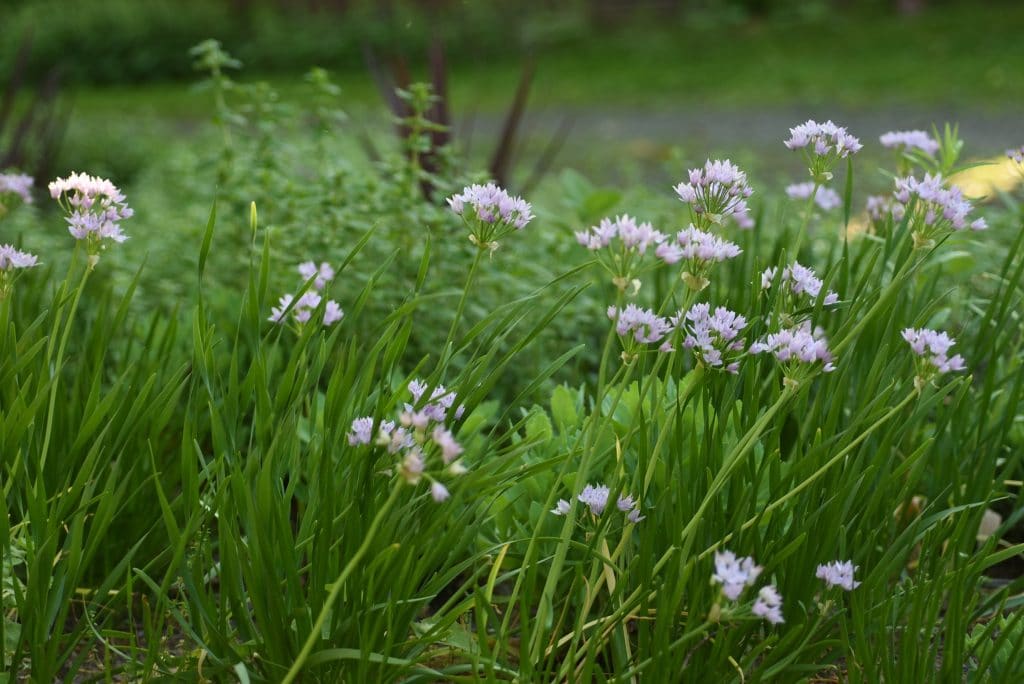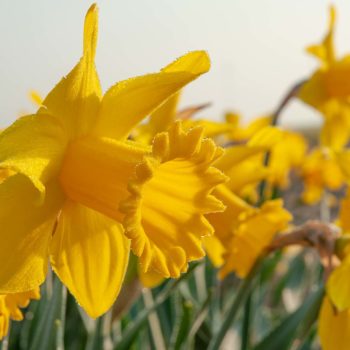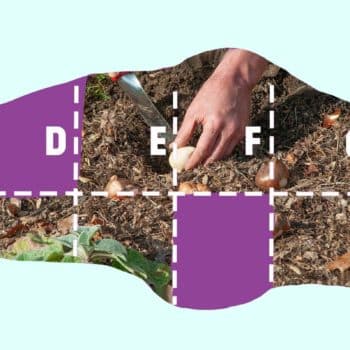by Tovah Martin
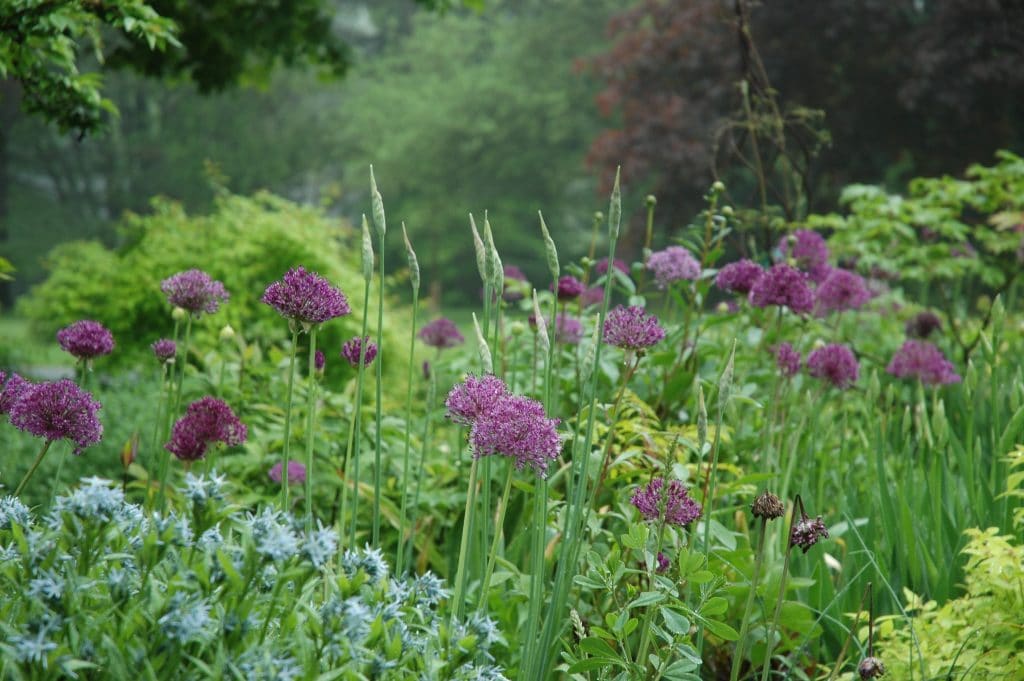
Allium Purple Sensation
You already know what bulbs can do in spring. But what you might be missing is all their feats during the rest of the growing season. This morning, I noticed a dragonfly perched on a spent daffodil flower spike in my meadow. It’s been many weeks since that daffodil was on my radar. But the dragonfly knew it was still standing tall. And that dragonfly/daffodil moment was a flag waver for what bulbs do for the natural web. Sure, the daffodil’s moment of splendor was long gone. For me, those flower spikes are just a remainder from the first perk of spring when all the Narcissus ‘Delibes’ scattered irregularly through the field blossomed before the rest of the meadow woke up. Now, the daffodils are just a memory. But not for the dragonfly. She was perched on that strong vertical spike—perhaps depositing eggs, or maybe just resting after a long night spent reducing the mosquito population. Helping that dragonfly in her pursuits is one of the pleasures of gardening. That’s one of the many functions that bulbs perform in summer. But there’s much more.
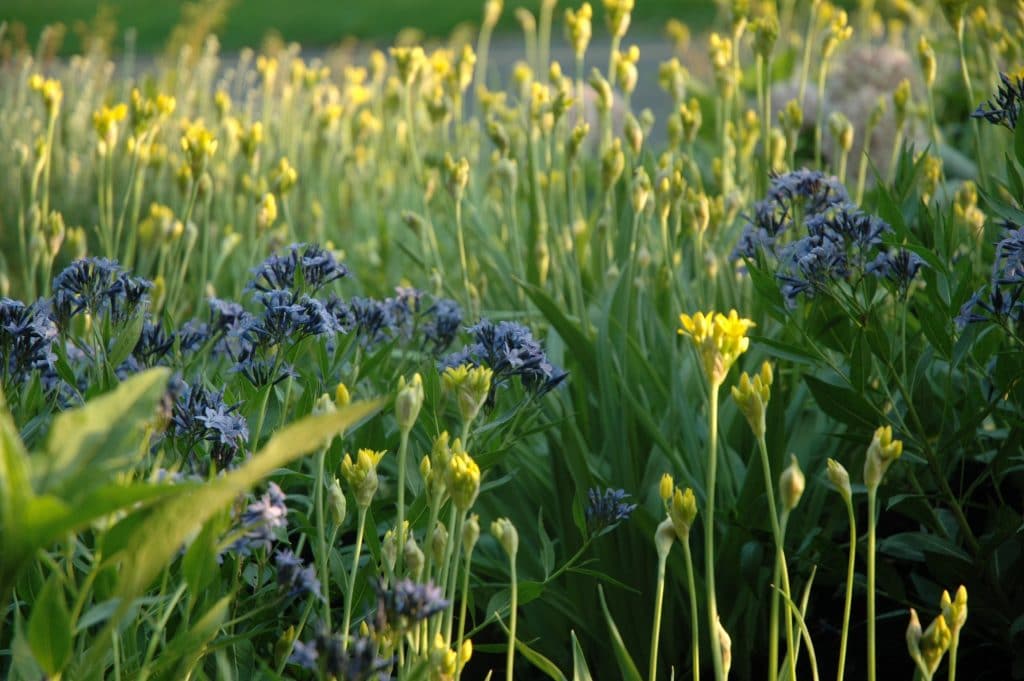
Allium Moly with Amsonia
Bulbs are the obvious heroes of spring. They come galloping to the rescue just when we’re starved for flowers and desperately need nature in our lives. Even at that point, it’s not only about us—flowering bulbs provide ready fodder for pollinators when they first venture out. Without bulbs, we’d all be deprived of the buzz associated with the starting gate of the season. But those perks don’t pause when the flower fervor is over. Bulbs keep right on working their magic after the spring rush and they continue performing their good deeds in design.
Bringing Bulbs and Design Together
Bulbs are gregarious and play well with others. Sure, an eye-riveting mono-tulip display is like a walk in the park, but that concept can also translate into your front or back yard on a smaller scale. Be creative…Find clever ways to incorporate bulbs into a field as an accent. Or merge bulbs as a moment in time before the rest of the garden is up and running. Go ahead…Take a throwaway space that will be gobbled up later in the season by shrubs or voluminous perennials and tuck in some tulips to give that little piece of real estate a “value added” moment. Use bulbs to accent when spireas, Japanese maples, and other shrubs are displaying their early season flush of color. Plug into bulbs for their design functions beyond just a dab of color. Before other performers are up and running, bulbs can serve as your first vertical accents sending your eye up above ground level, expanding the dimension of your garden. That’s a critical function in a composition and bulbs do it so well. Future posts will tell you the nuts and bolts of exactly how bulb integration is done as well as clever ways to make it happen helping you open that window of opportunity. So stay tuned.
Putting Bulbs to Work
Gone are the days when bulbs were solely seen as a stand alone moment. Now they can be part of a succession, easing the gaps between venues. Bulbs are valid as spring slips into summer. Alliums of all types are great transition bulbs, but bulbs of all types fill in gaps rather than leaving a space void. They claim real estate, preventing weeds from stepping in, helping you fill your garden with a solid mass of splendor. Before hydrangeas leaf out, put bulbs in that blank space.
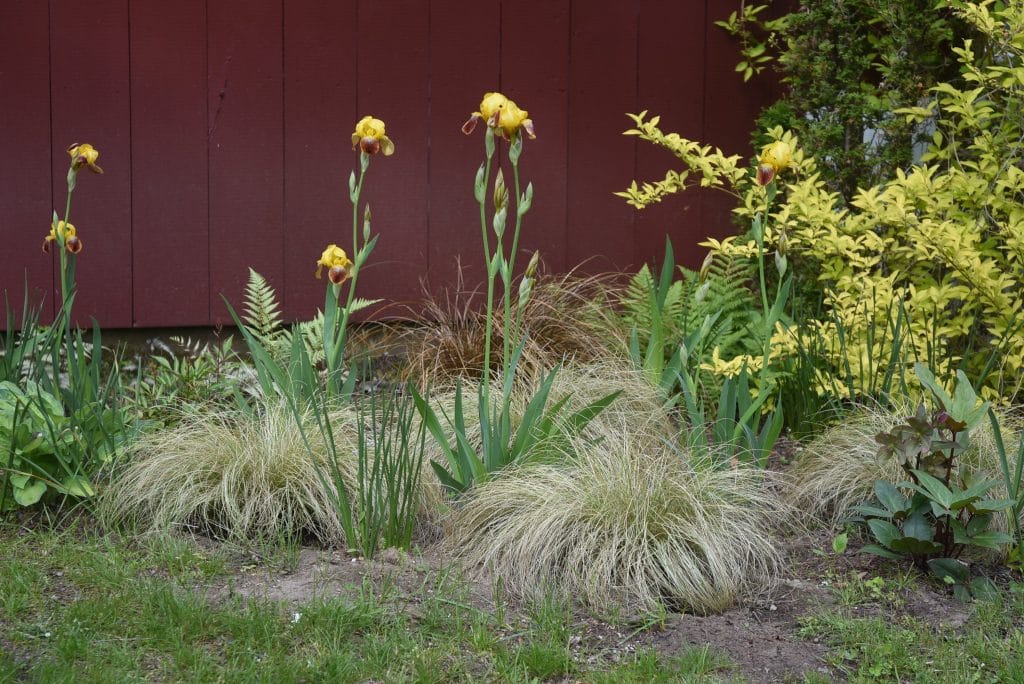
Daffodil foliage with Carex
Bulbs in Action Later in the Season
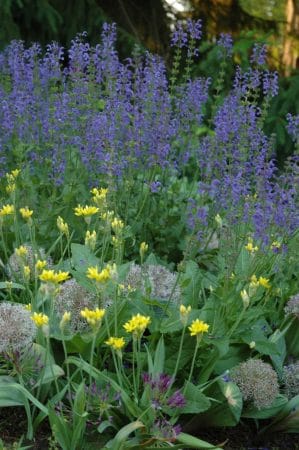
Allium Moly with Salvia
Think about bulbs as little design solutions. What’s more riveting than a herd of round allium flowers forming exclamation points in your garden? Alliums are available in a series of colors; they can serve as groundcovers running between perennials or around annuals or beneath shrubs. And they range in size from petite butter yellow-blooming Allium Moly and its equally petite pink counterpart Allium Unifolium that follow on the heels of the sensational spring bulbs to taller Allium Ambassador, Globemaster and Mount Everest that serve as exclamation points. Way into July, the tall and sleek drumstick allium—Allium Sphaerocephalon is making its statement. Beyond being just a throwaway moment, they add verve and make that space meaningful. Combine them as accents between mounding perennials such as nepeta, salvia, scabiosa, hardy geraniums, or threaded through ornamental grasses. Or set them up as conspirators beside other spires like foxgloves and gaura to provide the orb shape to give the display attitude. Camassias also add meaning to an unmown field, standing tall between the blades, giving the meadow meaning while its gaining girth. And again, the benefits are not only about us. Pollinators go spastic. Those florets are always buzzing. The more you plant, the more efficient their work will be. If you were a bee, those flowers furnished in the lull between spring and summer bloomers would be a lifesaver.
After the Glory Days
The blossoming allium orbs are a clear design solution. But what about the discrete design duties that bulbs perform after their glory session? Right now, I still have iris and daffodil foliage wading in a garden filled with mounds of low-growing sedges. Again, the flowers faded months ago. That foliage is adding another dimension to the garden that I didn’t predict. It’s adding attitude and taking the scene to another level. The off-season amaryllis making growth before going dormant can serve the same function. It’s amazing what benefits follow every time you make an effort. When you plant, insects applaud. The real thrill of gardening comes when you tweak to make your yard part of a bigger picture. The dragonfly just provided one more reason to plant more daffodils.
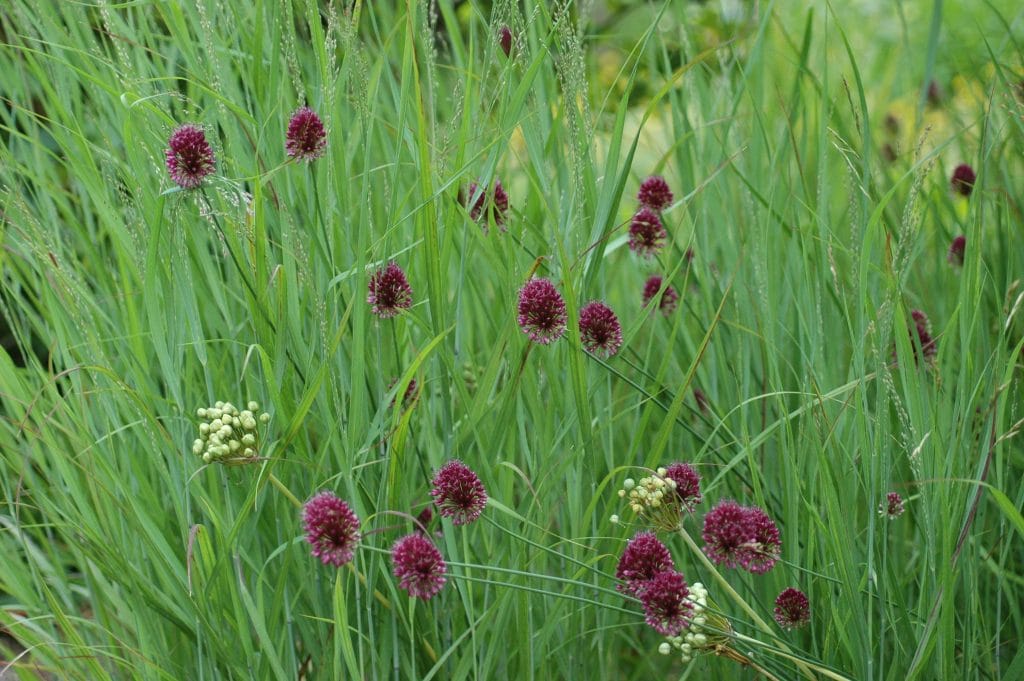
Allium Sphaerocephalon

